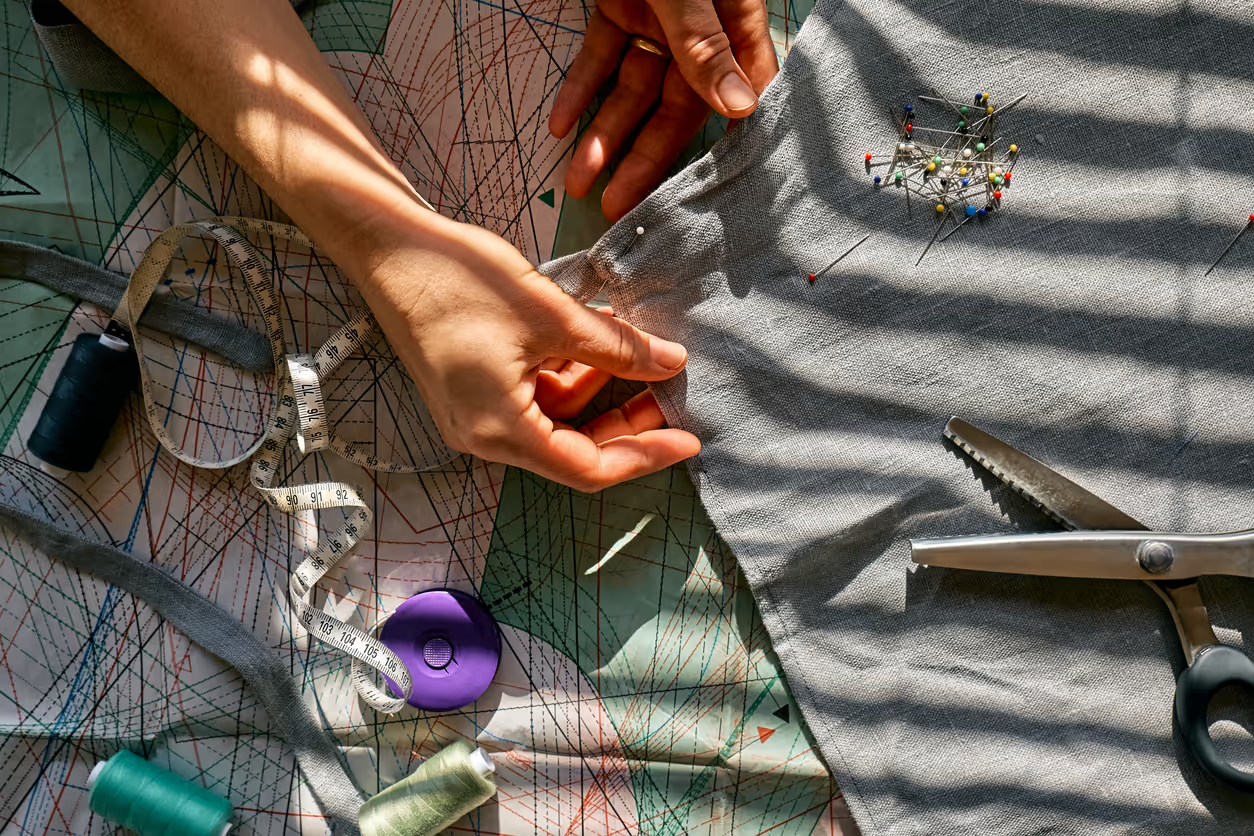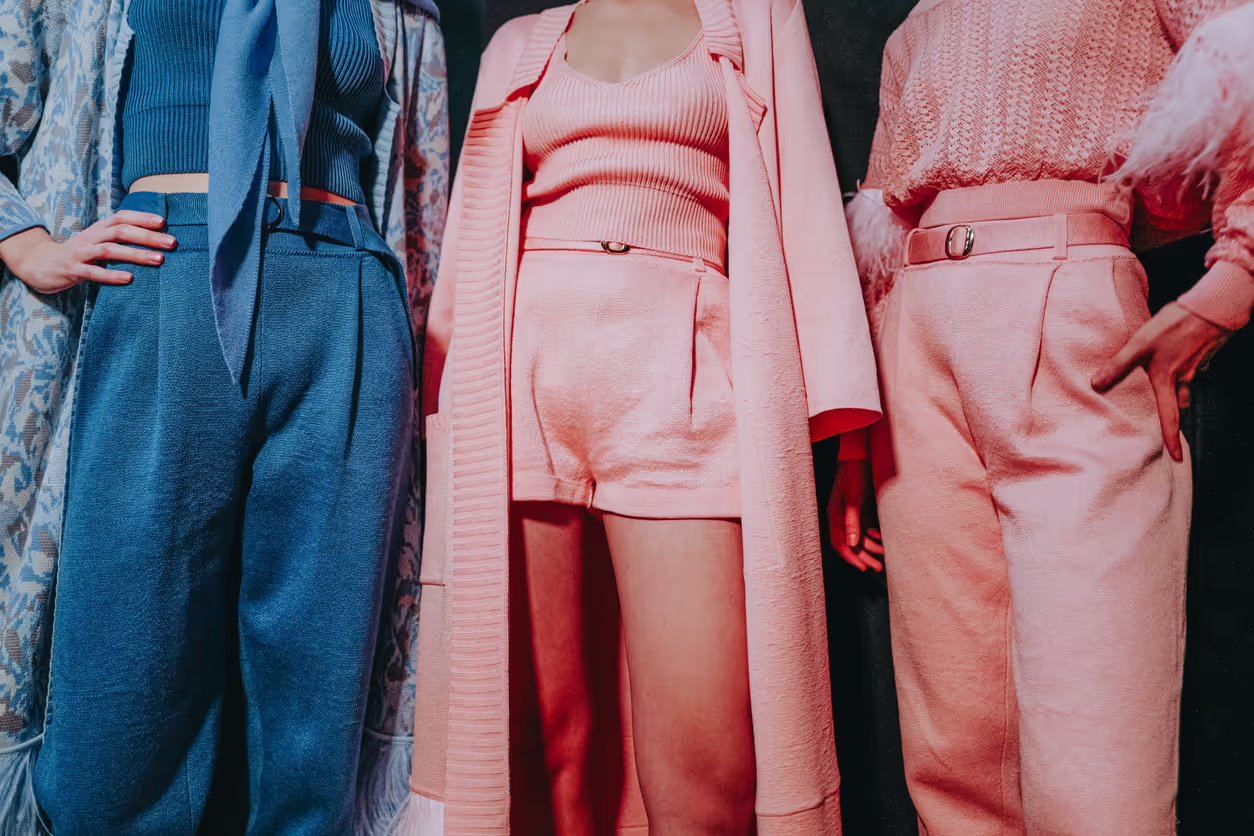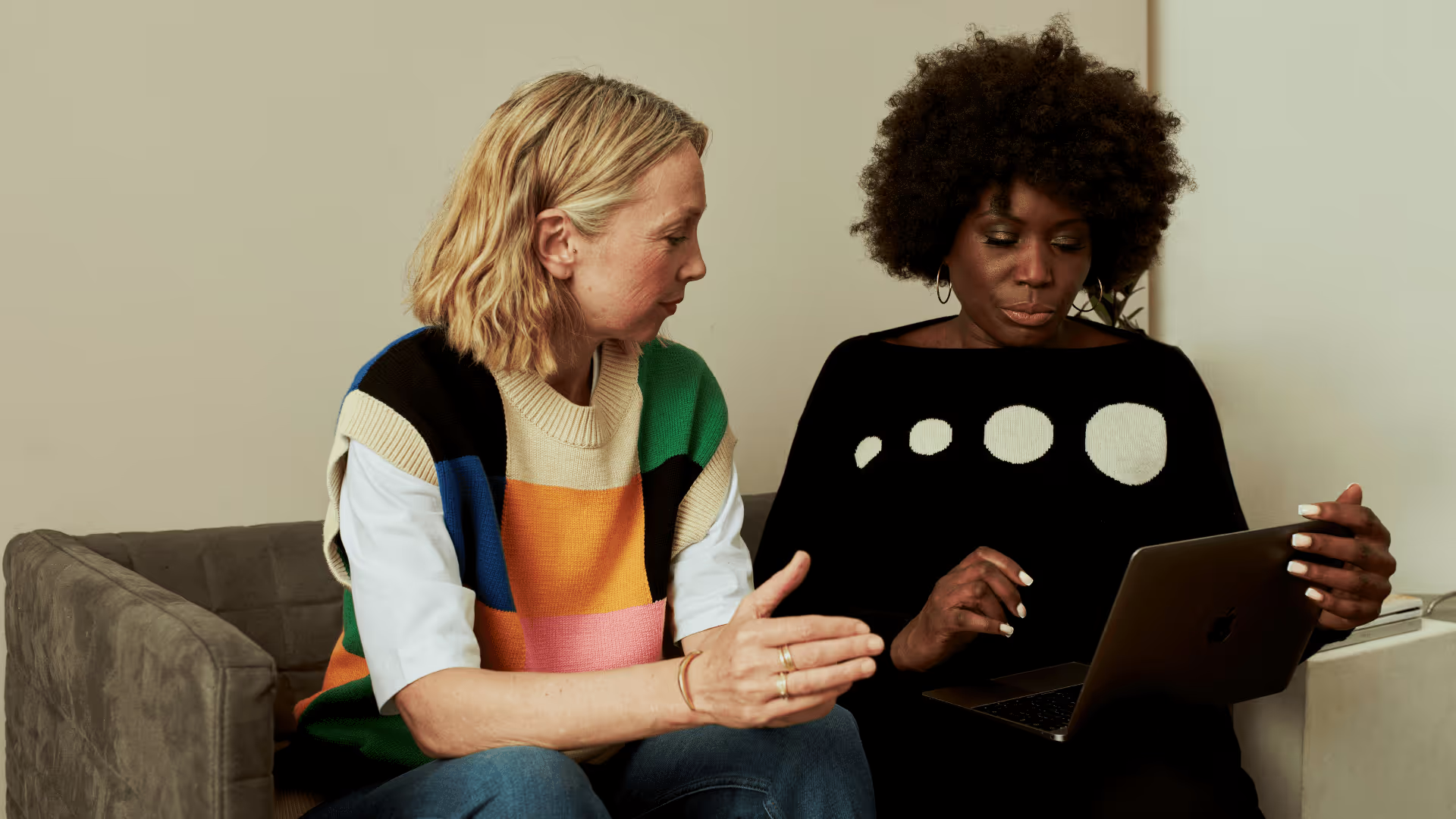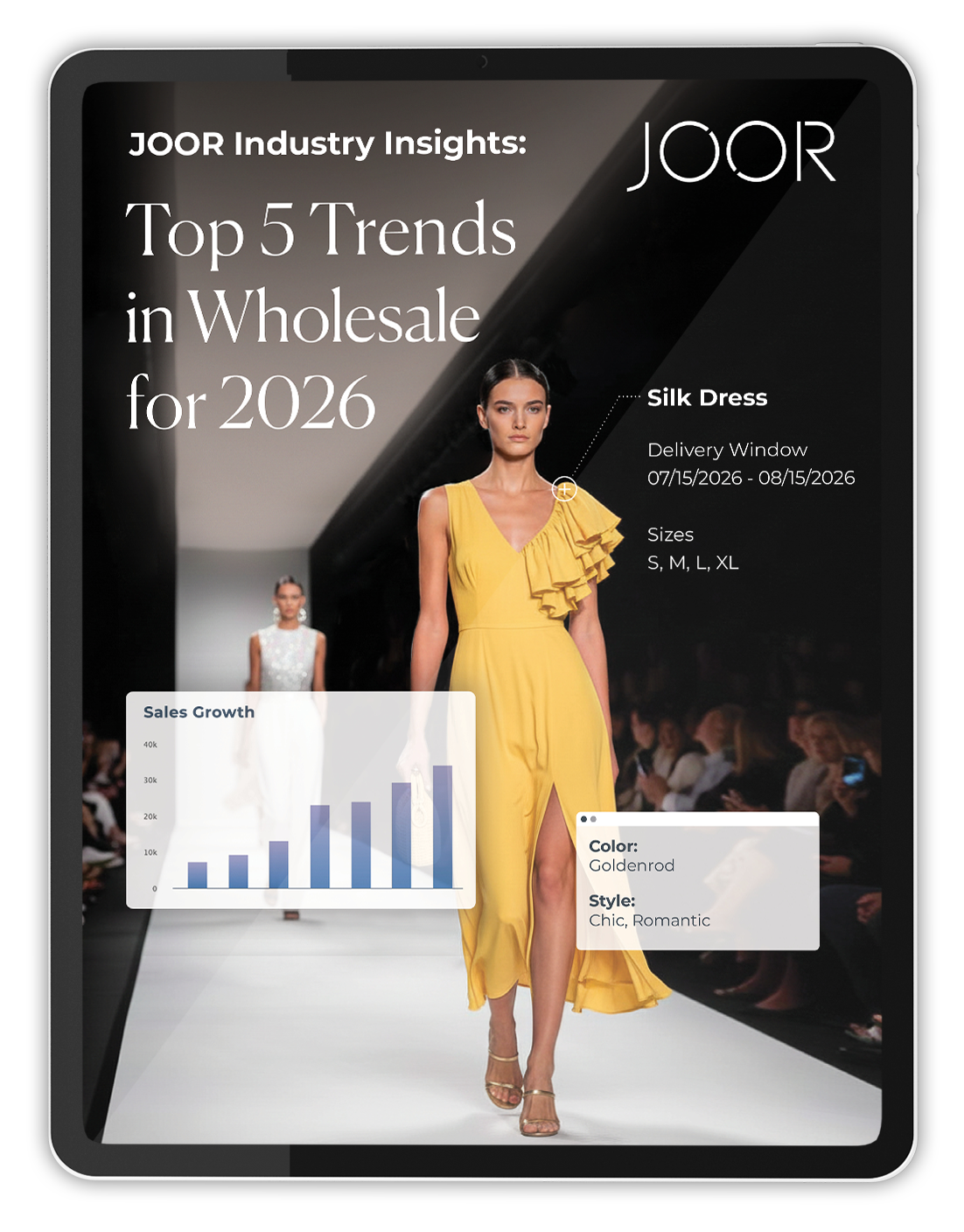How to Choose the Best Fashion ERP For Your Brand in 2025
Explore essential tips for selecting the ideal Fashion ERP system for your brand. Learn key criteria, including scalability, integration, and cost considerations, to optimize your wholesale fashion business operations.
%2520(13).avif)
Brief Summary
Disconnected systems slow brands down, but a well-integrated ERP connects design, inventory, and order management, giving fashion brands full visibility and control.
However ERP success depends on more than choosing the right software, it’s about implementing the right integrations and maintaining data quality. This guide breaks down what fashion brands should consider when selecting and integrating an ERP to power long-term growth.
Key Insights:
- ERP integrations aren’t instant plug-ins
APIs still require strategic setup, including data cleanup, mapping, testing, and regular performance monitoring post-launch. - A connected backend improves operational efficiency
Synchronizing data across departments reduces manual errors, improves cross-team workflows, and ensures decisions are based on accurate insights. - The benefits are both strategic and day-to-day
Brands see faster order processing, better stock visibility, reduced admin, and stronger forecasting when ERPs and wholesale tools work in sync. - Leading ERP platforms for fashion include:
NetSuite, ApparelMagic, AIMS360, Shopify, SAP, and Microsoft Dynamics—offering tailored features for inventory, financials, and fulfillment. - Look for ERPs with existing integrations
Systems with prebuilt connections to platforms like JOOR simplify implementation and ensure smoother data flow between tools.
Why Fashion Brands Need ERP Today
Without Enterprise Resource Planning, also known as ERP, many fashion brands struggle with large amounts of manual data entry, disconnected systems and poor visibility across their business. This makes it harder to work efficiently, plan strategically and act responsively to changes.
ERP is a crucial tool that helps fashion businesses operate in a more streamlined and efficient manner. By connecting all areas of business, from product development to design and delivery, it can transform apparel operations from end to end.
Key Criteria for Choosing a Fashion ERP

Selecting the right ERP for your wholesale fashion business is akin to curating the perfect collection—every piece must work in harmony to create a cohesive whole. As you evaluate potential ERP solutions, consider these key criteria, each playing a crucial role in the success of your wholesale operations.
Detailed Inventory Management
Inventory can be both your greatest asset and your biggest challenge. The right ERP system can turn inventory management from a headache into a strategic advantage.
Look for an ERP that offers:
- Real-time tracking of SKUs with size and color matrices
- Low stock alerts and automated reordering
- Serialized inventory tracking for high-value items
- Multi-location inventory management
Season and Collection Management
Fashion's cyclical nature demands an ERP that can keep pace with the industry's rhythms. From planning next season's line to managing the lifecycle of each collection, your ERP should be a valuable partner in this process.
Your ERP should support:
- Collection planning tools
- Integration with trend forecasting data
- Seasonal inventory planning and allocation
Bill of Materials (BOM) and Costing
In an industry where margins can be tight and competition fierce, accurate costing can make the difference between profit and loss. A sophisticated BOM and costing module is essential for maintaining healthy margins and making informed pricing decisions.
Ensure your ERP includes:
- Detailed fabric and trim management
- Comprehensive cost calculation tools
- Supplier cost tracking and management
Product Lifecycle Management (PLM) Integration
The journey from initial concept to final product is complex, involving multiple stages and stakeholders. An ERP that integrates seamlessly with PLM systems (or better yet, offers built-in PLM features) can significantly streamline this process.
This integration ensures that design specs, material requirements, and costing information flow smoothly from ideation to production, reducing errors and speeding up time-to-market.
Order Management Across Multiple Channels
In an omni-channel retail environment, your ERP needs to be a master juggler, handling orders from various sources with ease and precision. This capability is crucial for maintaining consistency across all sales channels and providing a seamless customer experience.
Your ERP should handle orders from:
- Wholesale B2B platforms like JOOR
- Retail point-of-sale systems
- E-commerce websites and marketplaces
- Ensure real-time synchronization across channels and advanced features like automated order routing.
Scalability, Flexibility, and Integration
The fashion industry is known for its rapid changes and evolving trends. Your ERP should be able to adapt and grow alongside your business, accommodating new challenges and opportunities as they arise.
As you evaluate ERP systems, consider their capacity for:
- Their ability to handle increased transaction volumes and user numbers
- Support for multiple currencies and languages for international expansion
- Cloud-based versus on-premises solutions (cloud-based options often offer greater scalability and accessibility)
- Customization options to add or modify features as needed
Integration capabilities are crucial in today's interconnected business landscape.
What to look for:
- APIs and pre-built connectors for e-commerce platforms, Point of Sale (POS) systems, and marketplaces
- Seamless data synchronization across different modules and systems
- Potential for integrating emerging technologies like AI and IoT
User-Friendliness
An ERP system is only as good as its adoption rate among your team. Even the most feature-rich system will fall short if your staff finds it difficult to use or navigate.
When assessing the user-friendliness of an ERP, prioritize systems that offer:
- An intuitive, modern interface design
- Mobile accessibility for on-the-go management
- Customizable dashboards for different user roles
- Comprehensive training resources and user guides as well as customer support
Reporting and Analytics
When it comes to analysis and forecasting, gut feelings aren't enough. Your ERP should serve as a powerful analytical tool, providing insights that drive informed decision-making across all aspects of your business.
Look for an ERP that provides:
- Real-time dashboards for key fashion metrics (e.g., sell-through rates, inventory turns)
- Predictive analytics for demand forecasting
- Customizable report generation
- Visual data representation for quick insights
Cost Considerations for Fashion ERP Investment

While the right ERP can reshape your brand, it's important to approach the investment with a clear understanding of the financial implications. Like any major business decision, choosing an ERP requires a careful cost-benefit analysis. Here’s some things to consider:
Initial Costs
These are the upfront expenses you'll incur when adopting a new ERP system.
Initial ERP Costs Include:
- Licensing Fees: The cost of purchasing the software, which can vary widely based on the number of users and the specific modules you need.
- Implementation Costs: This covers the expenses related to setting up the system, including data migration, system configuration, and any necessary customizations. Implementation can often be one of the largest cost components.
- Training Expenses: Comprehensive training is crucial for successful ERP adoption. Factor in costs for both initial training and ongoing education as new features are released or new staff join your team.
Ongoing Costs
ERP systems require continuous investment to remain effective.
Ongoing ERP Costs Include:
- Subscription Fees: For cloud-based ERPs, you'll typically pay a recurring fee based on your usage and number of users.
- Maintenance Costs: Even on-premises solutions require regular maintenance to ensure optimal performance and security.
- Upgrade Expenses: As new versions of the ERP are released, you may need to pay for upgrades to access new features or maintain compatibility with other systems.
Return on Investment (ROI)
While ERPs represent a significant investment, they should ultimately drive business value.
Calculate Potential ERP ROI by Considering:
- Efficiency Gains: Estimate the time and resources saved through process automation and improved workflows.
- Error Reduction: Quantify the potential savings from reducing manual errors in areas like inventory management and order processing.
- Improved Decision-Making: Consider the financial impact of having real-time data for more informed business decisions.
- Increased Sales: Factor in potential revenue increases from improved inventory management and enhanced customer service capabilities.
Hidden Costs
Be aware of less obvious expenses that can significantly impact the total cost of ownership.
Hidden Costs when Investing in an ERP Solution:
- Data Migration: Moving your existing data into the new system can be complex and time-consuming, often requiring specialist expertise.
- Additional Modules: As your needs evolve, you may need to purchase additional modules or features not included in your initial package.
- Customization: While some level of customization is often necessary, extensive modifications can be costly and may complicate future upgrades.
- Hardware Upgrades: For on-premises solutions, you may need to invest in new hardware to support the ERP system.
- Ongoing Support: Consider the costs of internal IT support or external consultants needed to manage and optimize your ERP system.
By thoroughly evaluating these cost factors, you can develop a comprehensive understanding of the total cost of ownership for your ERP system. This will help you make a more informed decision and avoid unexpected expenses down the line.
Signs Your Fashion Brand Needs an ERP
Unsure if your business needs Enterprise Resource Planning? If you’re experiencing any of the issues below, it might be time to invest.
Assess against this checklist:
- Your business is heavily reliant on spreadsheets
- Your team spend a large amount of time on data entry
- Your departments are all using different systems
- There is poor communication between different departments
- You are repeatedly experiencing inventory mistakes
- You are frequently understocked
- You are frequently overstocked
- You’re facing supply chain bottlenecks
- You’re having trouble scaling your operations
Fashion ERP Software Evaluation Process

With a clear understanding of your needs and the key criteria for selection, it's time to move on to the evaluation process. This stage is crucial in ensuring you select an ERP that not only meets your current needs but also aligns with your future goals.
ERP Evaluation Process:
- Create a shortlist of potential ERP vendors based on initial research. Look beyond flashy marketing and dig into the substance of each offering. Focus on vendors with proven experience in the fashion industry, as they'll better understand the unique challenges you face, from seasonal inventory management to complex size and color matrices.
- Prepare a detailed requirements document outlining must-have features and specific workflows. This document should serve as your blueprint, clearly articulating your business processes, pain points, and essential features. Include specific use cases unique to your fashion business, such as how you manage collections or handle multi-channel sales.
- Schedule demonstrations focusing on your specific use cases. Generic demos won't cut it in the fashion world. Ask vendors to show how their ERP handles your particular scenarios, whether it's managing a sudden influx of orders during a flash sale or tracking the lifecycle of a product from design to delivery.
- Request trial periods or sandbox environments for hands-on testing. There's no substitute for firsthand experience. Use this time to put the ERP through its paces, testing everything from inventory updates to financial reporting. Pay special attention to how it handles fashion-specific tasks like size breakdowns or style-color-size matrix management.
- Involve key department heads in the evaluation process. Fashion is a collaborative industry, and your ERP selection should be too. Ensure that voices from design, production, sales, and finance are all heard. Each department will have unique insights into what features are most crucial for their day-to-day operations.
- Develop a scoring system to objectively compare options. In the subjective world of fashion, it's important to have objective measures for your ERP choice. Create a weighted scoring matrix that reflects your priorities, whether that's robust inventory management, advanced analytics for trend forecasting, or seamless integration with e-commerce platforms.
The ERP evaluation process is a critical journey that requires time, effort, and careful consideration. By following these steps, you'll be able to make an informed decision based on objective criteria and real-world testing.
Throughout this process, maintain open communication with vendors and don't hesitate to ask tough questions. Pay attention to the vendor's responsiveness and willingness to understand your unique business needs – this can be indicative of the kind of support you'll receive post-implementation.
Lastly, while it's important to be thorough, avoid analysis paralysis. Set a realistic timeline for your evaluation process and stick to it. The fashion industry moves quickly, and implementing the right ERP can give you a significant competitive advantage.
Implementation and Planning for Your New Fashion ERP

Selecting the right ERP is only half the battle; successful implementation is what turns your investment into tangible business value. Like planning a fashion show, ERP implementation requires meticulous planning, coordination, and attention to detail.
Key Steps for a Successful ERP Implementation:
- Outline a realistic implementation timeline, typically ranging from a few months to a year depending on complexity.
- Prioritize data cleansing and migration strategies to ensure accurate information in your new system.
- Adopt a phased rollout approach, starting with core functionalities and gradually adding more features.
- Invest in comprehensive staff training and change management to ensure smooth adoption.
- Form an implementation team with representatives from all departments to address cross-functional needs.
Remember that ERP implementation is a significant undertaking that requires commitment from all levels of your organization.
Must-Have ERP Capabilities for Apparel Brands
When adopting an ERP system, there are several features fashion brands should look out for.
- Workflow automation: an essential tool that will help you connect different areas of business and give you a better overview of your supply chain.
- Advanced inventory tracking: crucial for getting real-time updates of your inventory levels and helping you prevent stockouts.
- Distribution and shipping management: this will allow you to improve your order fulfilment processes and give buyers more accurate delivery information.
- Omnichannel sales support: allows you to offer a better buying experience to retailers.
- Multi-currency accounting: helps you to conduct international business more easily and quickly.
- Integrations: connect important areas of business for streamlined data flow and reduced manual entry.
Future of Fashion ERP: AI, Automation, and Predictive Analytics
As the popularity of AI grows, more and more ERP software will have predictive capabilities built into them. This will be particularly of use to the fashion industry, where trends change fast and a lot of business decisions rely heavily on forecasting.
An AI-powered ERP should be able to make demand forecasting more precise, stock and trend prediction easier, and even automate replenishment.
Find the Perfect Fit with Your Wholesale Management System and ERP Software
Choosing the best fashion ERP is a critical decision that can have a long-lasting impact on your business operations and competitive advantage. By carefully assessing your needs, evaluating key criteria, and following a thorough selection process, you can find an ERP solution that not only meets your current requirements but also supports your future growth.
As you consider your options, it's worth noting the importance of integration capabilities. Many fashion businesses struggle with disconnected systems that hinder efficiency and data accuracy. Here at JOOR, we offer seamless integration with various ERP systems, addressing this common challenge.
By choosing an ERP that can easily connect with wholesale fashion software like JOOR, you can create a more unified and efficient technology ecosystem for your fashion business. Book a JOOR demo today.
FAQs
What makes fashion ERP different from standard ERP?
An ERP created specifically for the fashion industry will be built with complex supply chains and international business in mind. Additional features may include real-time tracking of inventory for multiple product variants, PLM integrations and sales forecasting features.
How do I know if my brand is ready for ERP?
If your departments are all using different software and finding it hard to communicate with one another, then you may need an ERP. Similarly, if you are experiencing multiple inventory mistakes, supply chain bottlenecks or issues with scaling, these are also signs your fashion brand could benefit from an ERP.
Which departments benefit most from ERP adoption?
All departments of a fashion brand will benefit from an ERP, from product to finance to sales, as the right system will link all these areas together in one streamlined workflow.
How long does ERP implementation usually take in fashion businesses?
The timeline for fashion ERP software implementation varies. The process can take anywhere between a few months to a year, depending on the size of your fashion brand.
Can ERP integrate with my existing PLM and ecommerce platforms?
Yes, many ERPs, including JOOR’s, should be able to integrate with PLM and ecommerce platforms.
What’s the biggest mistake fashion brands make when choosing ERP?
The biggest mistakes a brand can make when choosing a fashion ERP system are: to make the decision solely based on price rather than features, to make a selection without considering which system will best serve their business priorities or to choose an ERP that comes with no post-implementation support.
Related Insights

Why Digital B2B Catalogs are Essential for E-Commerce Businesses
Online catalogs have become a crucial component for retailers and their buyers in an evermore tech reliant industry. Read about how these dynamic product libraries act as comprehensive selling solutions that plug into current buying behaviors.
%2520(2)%2520(1).avif)
8 Ways a B2B Fashion Marketplace Solves Wholesale Scaling Challenges
Learn how a B2B fashion marketplace like JOOR helps your wholesale fashion brand overcome scaling challenges. Maximize resources, build retailer relationships, and enhance distribution to drive growth in the global wholesale fashion market.
%2520(1).avif)
Price Sheets Vs Line Sheets in Wholesale Fashion
Explore the key differences between price sheets and line sheets in wholesale fashion. Optimize product showcasing and sales strategies with clear pricing details and captivating visuals. Enhance buyer experience and streamline ordering process effectively.
.avif)
Fashion ERPs: The Challenge of Disconnected Systems and How to Solve It
Connecting ERPs and wholesale management platforms can be challenging. Dive into the power of integrated operations for brand success.
.avif)
Behind the Scenes: The Tech That Powers Our Wholesale Platform
Uncover how JOOR's user-friendly interface, seamless ERP integrations, and advanced analytics are transforming the wholesale fashion landscape. Join us on a journey behind the scenes as JOOR empowers the wholesale fashion industry with cutting-edge technology.
%2520(2)%2520(1).avif)
8 Ways a B2B Fashion Marketplace Solves Wholesale Scaling Challenges
Learn how a B2B fashion marketplace like JOOR helps your wholesale fashion brand overcome scaling challenges. Maximize resources, build retailer relationships, and enhance distribution to drive growth in the global wholesale fashion market.


